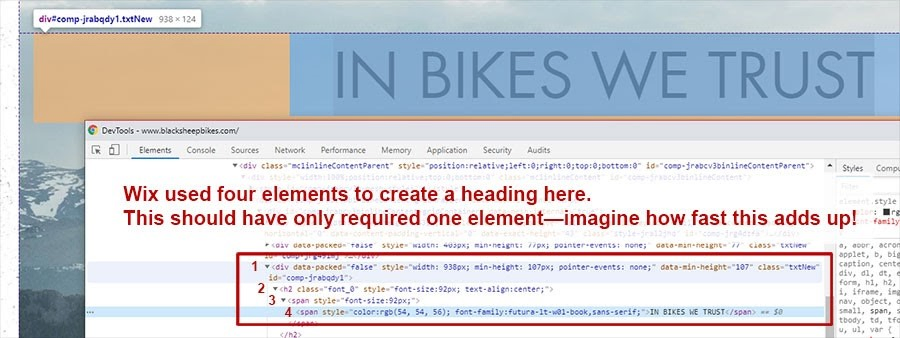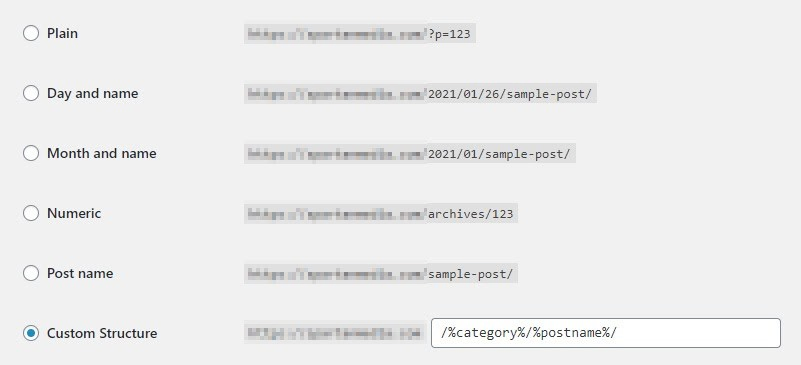WordPress is a powerful instrument with a plethora of choices at your disposal. However, these can also be the source of errors. You can learn more about them here in the post Top 8 WordPress Mistakes and How to Avoid Them for 2023.
WordPress is an incredibly potent and adaptable platform. However, because it has so many choices, it’s simple to make mistakes when using it.
While all of these errors will have a negative impact on your website, some of them can be disastrous. That’s why it’s critical to understand what they are so you can prevent them.
This guide by Wpopal will walk you through 10 common WordPress mistakes and how to prevent them.
Top 8 WordPress Mistakes and How to Avoid Them for 2023
Installing Excessive Plugins
One of the factors that renders WordPress so potent is the ease with which features can be added by merely adding one or more plugins. Gone are the days when adding a new feature required hiring a coder and spending thousands or tens of thousands of dollars.
However, this can have serious consequences.
The first issue is that the programming quality of these apps varies greatly. Many extensions, like themes, are badly written, slowing down the load speed and introducing HTML mistakes into your website.
These apps frequently import a slew of scripts, CSS files, images, and typefaces, further degrading performance and creating a poor user experience.
Another issue is that because it is so simple, many people make the error of installing too many apps.
This causes your websites to run more slowly, regardless of how well they are coded, since processing power is still required to perform the features, they help in providing and to include any external files they import.
Skipping Updates
It can be seen that the backends of a large number of websites and am always amazed at how out of date some people are prepared to let their plugins, themes, and even the WordPress core become.
This common blunder can have disastrous effects because these updates fix not only speed, design, and usability problems, but also security vulnerabilities that hackers may exploit to gain access to your website.
Once inside, they can do a variety of malicious things, from the apparent, such as deleting or defacing a website, to the covert, such as intercepting credit card information or adding external connections.
If you know you won’t have time to update WordPress core on a frequent basis, I suggest that you enable automated updates.

Using Poorly Coded Themes
This is the first and most essential thing to consider because it serves as the basis for your SEO efforts, and most themes fail miserably in this respect.
Whether your theme is custom-built, bought from a theme provider, or received for free from the WordPress source, there are a few critical details to consider ensuring it does not disadvantage you, including:
HTML Validation
This is important because invalid HTML can cause display problems for both users and search engines.
When this occurs, you may lose visitors because your website does not show and/or function correctly for them, and you may rank badly because search engines are unable to render and comprehend the information on your page.
It’s also worth noting that you might not be able to fix some errors because they’re caused by something you don’t have access to, such as fundamental features in some themes or plugins.
If you’re dealing with serious mistakes that are creating rendering problems, it may be better to start over and rebuild from the bottom up.
HTTP Requests
Many themes import an absurd number of scripts, images, typefaces, and other kinds of files, causing your sites to open slowly.
Worst of all, many themes import these files needlessly. Rather than loading files only on sites where they are needed, many themes load them on all pages, resulting in considerably delayed startup times.
Page performance is important for both consumers and SEO.
There is no magic number to strive for, but fewer is always better in terms of speed – particularly if your website loads slowly.
Excessive DOM Size
This may appear to be extremely complex, but it is actually quite easy. It simply implies that we must make our WordPress site’s HTML as efficient as feasible.
While this may appear minor, effective HTML code can have a significant impact on how well a site functions because each element affects memory utilization, design computations, and layout reflows.
Many themes use excessive HTML components, which are frequently layered several layers deep, which rapidly degrades speed.
This is evident with page builders, but it is also evident at the theme level because most writers prioritize aesthetic look over code efficiency.
Not Optimizing Media
We all keep an extremely powerful camera in our pockets these days, which allows us to quickly add new pictures to our WordPress websites, but this also leads to a frequent and significant error.
When you snap a photo with your iPhone or Android device, the image is usually much larger than it requires to be for use on your webpage.
These big, high-resolution pictures are ideal for printing or cropping a smaller portion to show at full scale without sacrificing image clarity. However, if you submit them straight to your WordPress media library, they are frequently kept as full-sized, unoptimized images.
To help remove this problem, some themes will automatically resize files based on a set of measurement pairs. Many, however, do not.
If your WordPress site is now up and running and you’re just getting started with this problem, the great news is that you don’t have to re-upload everything in your media collection because there are a variety of programs that allow to automatically resize them.
It is worth emphasizing the importance of backing up your website before using tools like this because if they erase or overwrite something you didn’t expect for them to, you’ll need a method to undo it.
Overlooking Security
It has been discussed that the security risks of not updating your plugins, templates, and WordPress core, but maintaining your website safe extends far beyond that.
It is critical to note that there is no method to fully secure your website. However, by strengthening your security, you will prevent most hackers, with the exception of those who are particularly targeting you.
This is due to the fact that hacking is primarily a numbers game in which hackers crawl thousands or even millions of websites in search of easily exploited flaws.
Lockdown The Admin Area
There are several methods to restrict access to your admin area to a specific IP address, which will prevent most hacker efforts.
Linux Servers
It’s as easy as making a.htaccess file with the appropriate text and uploading it to your wp-admin folder.
Merely open a text editor, make a new file, and put the code below into it. Replace xx.xx.xx.xx with your IP address, which you can discover by searching “what’s my ip” on Google.
# ALLOW USER BY IP
<Limit GET POST>
order deny,allow
deny from all
# Replace with your IP address
allow from xx.xx.xx.xx
</Limit>
Plugins
This should only be used as a last option because it is the least efficient way of restricting access to a specific IP address. It also creates an issue in that if your IP address changes, you will be unable to update the plug-in to your new IP address.
At that time, the only method to enter your admin section is to log in via FTP and remove the plugin. If you’re going to have to do that, you should just use.htaccess in the first place.
Limit Login Attempts
This is another easy method to strengthen the security of your WordPress website by barring login attempts from a specific IP address after a certain number of unsuccessful attempts.
This also necessitates the use of a plugin, and there are a variety of free and paid tools accessible to accomplish this.
Enable TFA (Two Factor Authentication)
Because it transmits a number to your mobile device that you must input before signing in, two-factor authentication is a potent tool for protecting your website. This means that someone else will be unable to reach your admin section unless they have physical access to your computer.
This necessitates the use of a plugin, and there are a variety of free and paid tools accessible to accomplish this.
Not Enable Backups
Everyone requires automatic copies. This is an important aspect of having a website.
Aside from allowing you to simply turn back changes, it may also assist you in recovering swiftly from a hack by restoring an earlier version of your website.
Your backup schedule will vary depending on how frequently you change your website, but it should operate at least weekly. I maintain backups for several months in case a breach happens and goes undetected for a while – this allows us to go back far enough to locate a clean copy to recover from.
While these copies can remain on your webserver to speed up the restoration process, they should ideally also be saved up to the cloud so that you always have a clear duplicate.
Not Properly Configuring Permalinks
The permalinks that WordPress generates are not optimal for search, so we’ll want to alter them.
This is a simple fix that is critical since a proper URL structure did help search engines comprehend the hierarchy of your website.
You should modify this option from whatever it is now to the following:
Don’t Use a Default Username
By default, the first username in a WordPress website is “admin,” which should be altered because it is the first username that hackers will attempt.
If you’re creating a new website, changing it during the installation procedure is straightforward.
If you already have a website, you cannot alter the passwords within the admin area; nevertheless, you can enter into your hosting account’s phpMyAdmin and directly edit the WordPress database.
You should also alter your user profile’s id so that you aren’t exposing your nickname to the public with each post.
Final Thoughts
In Top 8 WordPress Mistakes and How to Avoid Them for 2023, by avoiding these frequent web design errors, you can create an aesthetically attractive, easy-to-navigate website that effectively communicates your message.
A well-designed website can aid in the development of trust with your target audience and promote company success.
Remember to build your website with the customer in mind and try it on various devices to guarantee a consistent experience.


